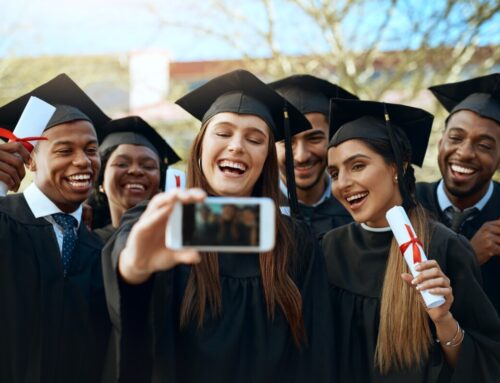
In 2024, blended teaching and learning is more important than ever. With technology evolving rapidly, educators are finding new ways to combine traditional classroom methods with online learning. This approach not only engages students but also prepares them for a tech-driven world. So, what strategies work best in this blended environment? Let’s dive in!
Key Strategies for Blended Teaching
- Community-Based Instruction: Connecting lessons to the local community helps students see the relevance of their education. This strategy encourages collaboration and real-world problem-solving.
- Differentiated Instruction in Education: Tailoring lessons to meet diverse learning needs ensures that every student can thrive. By using various teaching methods, educators can cater to different learning styles effectively.
Benefits of Blended Learning
- Flexibility: Students can learn at their own pace, balancing online and in-person activities.
- Engagement: Interactive online tools keep students interested and motivated.
- Collaboration: Blended learning fosters teamwork through group projects, both online and offline.
In conclusion, blending teaching and learning creates a dynamic educational experience. By embracing community-based instruction and differentiated strategies, educators can make learning more effective and enjoyable for all students.
Study smarter, not harder—Enroll online today!
What Are the Key Benefits of Blended Learning Strategies?

Blended teaching and learning is transforming education in 2024, combining traditional classroom methods with online resources. This approach not only enhances engagement but also prepares students for a tech-driven world. Understanding the key benefits of blended learning strategies can help educators create more effective learning environments.
Flexibility and Accessibility
Blended learning offers flexibility, allowing students to learn at their own pace. This is especially beneficial for community-based instruction, where learners can access materials anytime, anywhere. It empowers students to take charge of their education, making learning more personalized and effective.
Enhanced Engagement
By incorporating technology, blended teaching and learning keeps students engaged. Interactive online activities complement traditional lessons, catering to different learning styles. This is where differentiated instruction in education shines, as it meets the diverse needs of all students, ensuring no one is left behind.
Improved Collaboration
Blended learning fosters collaboration among students. Group projects can be conducted online, encouraging teamwork and communication. This approach not only builds social skills but also prepares students for real-world scenarios, making learning more relevant and impactful.
How to Effectively Integrate Technology in Blended Teaching
In 2024, blended teaching and learning is crucial as it merges traditional classroom methods with online education, enhancing flexibility and engagement. To effectively integrate technology, consider these strategies:
Embrace Community-Based Instruction
Utilizing local resources for community-based instruction connects students with their environment, creating real-world learning experiences that boost engagement and relevance.
Use Differentiated Instruction in Education
Differentiated instruction tailors lessons to meet diverse student needs. By incorporating educational apps and online quizzes, teachers can offer personalized learning paths, ensuring all students thrive in a blended setting.
Leverage Online Collaboration Tools
Online collaboration tools like Google Classroom and Microsoft Teams enhance student communication, allowing for interactive project work and idea sharing.
Incorporate Multimedia Resources
Integrating videos, podcasts, and simulations caters to various learning styles, making lessons more engaging and helping students understand complex concepts.
Encourage Self-Paced Learning
Blended learning promotes self-paced study, enabling students to revisit challenging topics or accelerate through familiar material, fostering independence and confidence.
Foster a Supportive Learning Community
Creating a supportive online community encourages students to ask questions and share experiences, motivating active participation in both online and in-person activities.
Engaging Students: Techniques for Blended Learning Success
Blended teaching and learning is transforming education in 2024, combining traditional classroom methods with online resources. This approach not only enhances student engagement but also caters to diverse learning styles. Understanding effective strategies is crucial for educators aiming to create a dynamic learning environment.
To make blended learning effective, teachers can utilize several strategies. One powerful method is community-based instruction. This involves connecting lessons to real-world situations, allowing students to see the relevance of their studies.
For instance, a project on local history can inspire students to explore their community while learning important concepts. Another key strategy is differentiated instruction in education. This means tailoring lessons to meet the varied needs of students. Teachers can offer choices in assignments or use technology to provide personalized learning paths. By doing so, every student can engage with the material in a way that suits them best.
Assessing Student Performance in a Blended Learning Environment
In 2024, blended teaching and learning have become essential in education. As classrooms evolve, understanding how to assess student performance in this mixed environment is crucial. With technology and traditional methods working together, teachers can better support their students’ unique needs.
Understanding Student Performance
Assessing student performance in a blended learning environment requires innovative strategies. Teachers can utilize community-based instruction to connect lessons with real-world experiences. This approach not only engages students but also helps them apply their knowledge in practical settings.
Key Strategies for Effective Assessment
- Use of Technology: Online quizzes and interactive platforms provide immediate feedback.
- Differentiated Instruction in Education: Tailoring assessments to meet diverse learning styles ensures every student can demonstrate their understanding.
- Regular Check-ins: Frequent discussions and reflections help gauge student progress and adjust teaching methods accordingly.
By implementing these strategies, educators can create a supportive atmosphere that fosters growth and achievement in a blended learning landscape.
What Role Does Collaboration Play in Blended Teaching?
Blended teaching and learning is becoming increasingly important in 2024. As classrooms evolve, understanding effective strategies can help educators create a more engaging and supportive environment for students. One key aspect of this approach is collaboration, which plays a vital role in enhancing the learning experience.
Collaboration fosters a sense of community among students. When they work together, they can share ideas and support each other, making learning more enjoyable. Here are some benefits of collaboration in blended teaching:
- Enhanced Learning: Students learn from one another, which can lead to deeper understanding.
- Community-Based Instruction: Collaborating with local organizations can provide real-world experiences, enriching the curriculum.
- Differentiated Instruction in Education: Group work allows teachers to tailor activities to meet diverse learning needs, ensuring everyone can participate effectively.
Incorporating collaborative projects into blended teaching not only strengthens relationships but also prepares students for future teamwork in their careers. By embracing collaboration, educators can create a dynamic learning environment that benefits all students.
Study smarter, not harder—Enroll online today!
Overcoming Challenges in Blended Learning Implementation
Blended teaching and learning is becoming essential in today’s classrooms. As we move into 2024, educators face unique challenges in implementing this approach effectively. Understanding these hurdles can help teachers create a more engaging and personalized learning experience for their students.
Embracing Community-Based Instruction
One major challenge is ensuring that all students feel included. Community-based instruction can bridge gaps by connecting lessons to real-world experiences. This approach helps students see the relevance of their education, making learning more meaningful and engaging.
Differentiated Instruction in Education
Another hurdle is addressing diverse learning needs. Differentiated instruction in education allows teachers to tailor lessons to individual student strengths and weaknesses. By using various teaching methods, educators can ensure that every student has the opportunity to succeed, regardless of their learning style.
Key Strategies to Consider
- Use technology wisely: Incorporate tools that enhance learning without overwhelming students.
- Foster collaboration: Encourage group work to build a sense of community.
- Provide ongoing support: Regular check-ins can help students stay on track and feel supported.
By focusing on these strategies, educators can overcome challenges and make blended teaching and learning a success in 2024.
How Can ‘Scholarship.Education’ Enhance Your Blended Teaching Experience?
Blended teaching and learning is becoming a vital part of education in 2024. It combines traditional classroom methods with online learning, making lessons more engaging and effective. But how can ‘Scholarship.Education’ enhance your blended teaching experience? Let’s explore some strategies that can make a real difference!
Community-Based Instruction
One effective strategy is community-based instruction. This approach connects students with real-world experiences. For example, students can work on projects that involve local businesses or organizations. This not only makes learning relevant but also helps students develop essential skills. By using ‘Scholarship.Education’, teachers can find resources and partnerships to implement this strategy effectively.
Differentiated Instruction in Education
Another key strategy is differentiated instruction in education. Every student learns differently, and blended learning allows teachers to tailor lessons to meet individual needs. With tools from ‘Scholarship.Education’, educators can create personalized learning paths, ensuring that every student can thrive. This flexibility is crucial for fostering a love of learning!
Future Trends in Blended Teaching and Learning: What to Expect in 2025
Blended teaching and learning is transforming education, combining traditional classroom methods with online resources. As we look ahead to 2025, understanding effective strategies is crucial for educators and students alike. This approach not only enhances engagement but also caters to diverse learning styles, making education more accessible.
Emphasis on Community-Based Instruction
Community-based instruction is gaining traction. This strategy connects students with real-world experiences, fostering practical skills. By collaborating with local organizations, educators can create immersive learning opportunities that enrich the curriculum and make lessons more relevant.
The Rise of Differentiated Instruction in Education
Differentiated instruction in education is essential for meeting individual needs. In 2025, expect more personalized learning paths. Teachers will leverage technology to tailor lessons, ensuring every student can thrive. This approach not only boosts confidence but also encourages a love for learning
Study smarter, not harder—Enroll online today!
FAQs
1. What is blended teaching and learning?
Blended learning combines traditional face-to-face instruction with online or digital learning activities, giving students more flexibility and control over their learning pace and style.
2. How is blended learning different from online learning?
Blended learning includes both in-person and online components, while online learning happens entirely in a virtual environment.
3. What are the benefits of blended learning?
It supports personalized learning, improves student engagement, and allows for better use of classroom time for collaboration and hands-on activities.
4. What are the challenges of blended teaching?
Challenges include access to technology, ensuring student participation online, and the need for teachers to adapt their instruction methods and materials.
5. What technology is used in blended learning?
Common tools include learning management systems (like Google Classroom or Canvas), video conferencing apps, digital assessments, and interactive learning platforms.
6. Can blended learning be used in all grade levels?
Yes, it can be adapted for elementary through higher education, though the structure and tools may vary based on age and subject.





